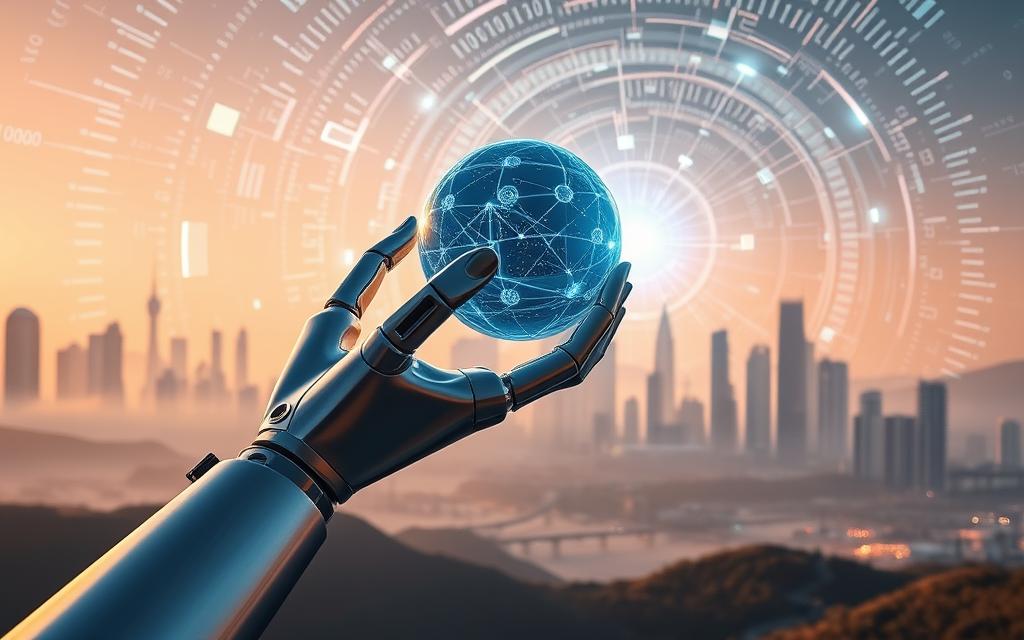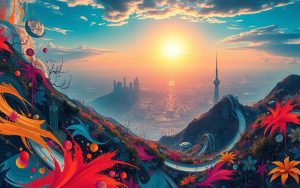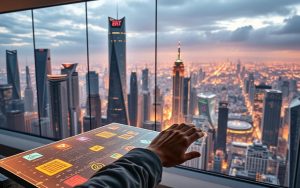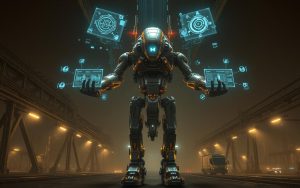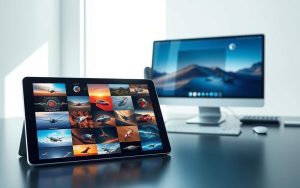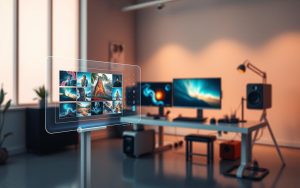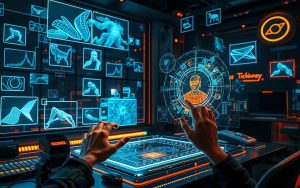Table of Contents
The intersection of technology and creativity has given rise to a revolutionary new form of visual content: AI-generated images. As AI content generators become increasingly sophisticated, they are transforming the way we create and interact with digital art.
The debate surrounding AI-generated images centers on whether they should be considered true art or simply the output of complex algorithms. As these tools become more accessible, their impact on various industries is becoming more pronounced, raising important questions about the nature of creativity and the role of technology in the artistic process.
This article will explore the technical and creative aspects of image generation, examining the potential of this technology to reshape our understanding of art and visual content creation.
The Evolution of AI in Visual Creation
The fusion of AI and visual art is redefining the boundaries of creativity and innovation. As we explore the evolution of AI in visual creation, it’s essential to understand the journey from traditional art forms to the current state of AI-generated images.
From Traditional Art to Digital Revolution
Traditional art forms have long been the cornerstone of visual creation. The advent of digital tools transformed artistic processes, paving the way for the emergence of digital art. According to a brief history of AI-powered image generation, the development of AI image generation technology has been rapid over the past decade.
How AI Image Generation Works
AI image generators rely on neural networks and machine learning algorithms to create visual content. The training process involves feeding these networks with vast amounts of data, enabling them to understand and generate images. This technology has evolved significantly, from simple digital art to sophisticated AI-generated imagery.
| Key Milestones | Description | Impact |
|---|---|---|
| Digital Art Emergence | Transition from traditional to digital art tools | Increased creative flexibility |
| AI Image Generation | Development of AI algorithms for image creation | Revolutionized visual content creation |
| Advanced AI Systems | Sophisticated neural networks for image generation | Enhanced image quality and diversity |
The relationship between human input and machine output has evolved significantly, with AI now capable of generating complex images that were previously the exclusive domain of human artists.
Understanding AI Generated Images
Understanding how AI generates images can significantly enhance their utility. AI-generated images are created through complex algorithms and vast datasets, making them increasingly realistic and versatile.
The Technology Behind the Magic
The technology behind AI-generated images involves diffusion models that gradually transform random noise into coherent images. These models are trained on massive datasets to understand visual concepts and relationships, allowing for the creation of highly realistic images from text prompts.
The process demystifies the “magic” behind AI-generated images by explaining the computational processes in accessible terms. It highlights the role of massive datasets in training AI to understand and generate visual content.
Different Types of AI Image Generators
There are various types of AI image generators available, each with its unique capabilities and limitations. Some are designed for artistic creation, while others are tailored for product visualization or marketing.
Understanding these differences helps users choose the right tool for their needs. By comparing and contrasting different generators, users can achieve better results with AI-generated images.
The Creative Potential of AI Art
AI art is pushing the boundaries of visual expression, enabling artists to explore new dimensions of creativity. The use of AI in generating images is not just about creating novel visuals; it’s about expanding the very definition of art and creativity.
Breaking Boundaries in Visual Expression
AI-generated images are allowing artists to create visuals that were previously impossible or impractical to produce through traditional means. This technology is giving rise to entirely new aesthetic categories and visual languages, challenging conventional notions of creativity. For instance, AI can generate intricate patterns, surreal landscapes, and complex abstract designs that would be difficult for human artists to create manually.
The Collaboration Between Human and Machine
The process of creating AI art involves a collaborative relationship between human creators and AI image generators. Artists input prompts, refine them based on the generated images, and iterate until they achieve the desired results. This iterative process highlights how human creativity is enhanced rather than replaced by AI image generation technology. The unique creative possibilities that emerge when human intuition meets machine learning are redefining our understanding of authorship in visual creation.
By leveraging AI as a creative partner, artists, designers, and marketers are able to produce innovative visuals that drive engagement and convey complex ideas in a visually appealing manner. The synergy between human creativity and AI’s computational power is opening new avenues for artistic expression and visual storytelling.
Practical Applications of AI Generated Images
AI-generated images are transforming the business landscape by providing innovative solutions for various industries. Businesses are now able to harness the power of AI to create high-quality visual content that enhances their marketing strategies, product design, and overall brand identity.
Marketing and Brand Identity
AI-generated images enable brands to create consistent, high-quality visual content that reinforces their brand identity. By leveraging AI, companies can produce engaging marketing materials quickly, reducing costs and production time. For instance, businesses can use AI to generate unique images for social media campaigns, enhancing their online presence. To create a stunning business logo with AI, you can explore tools that offer AI-powered design capabilities, as discussed in our guide on how to create a stunning business logo with.
Content Creation and Social Media
Content creators are using AI to produce engaging visuals for social media platforms, significantly impacting content marketing strategies and audience engagement. AI helps maintain consistent content schedules through rapid image generation, allowing businesses to keep their audience engaged with fresh and relevant visuals.
Product Design and Visualization
Product designers are utilizing AI visualization to prototype concepts and iterate designs efficiently. AI-generated images help businesses showcase products in various contexts without the need for expensive photo shoots, enhancing the overall design and visualization process.
Mastering the Art of AI Prompts
The key to unlocking the full potential of AI-generated images lies in mastering the art of prompts. Effective prompts serve as a bridge between your vision and the AI’s output, ensuring that the generated images meet your expectations.
Crafting Detailed Descriptions
To achieve the desired results, it’s essential to provide detailed descriptions of your vision. This includes specifying the mood, colors, themes, and key elements you want in your image. For instance, instead of saying “a futuristic city,” you could say “a neon-lit, futuristic cityscape at dusk with sleek skyscrapers and flying cars.”
Considering Composition and Style
Composition plays a vital role in creating visually appealing images. Guide the AI by specifying composition preferences, such as minimalistic elegance or rich, detailed visuals. Additionally, define the style you’re aiming for, whether it’s photorealistic, digital art, or anime-inspired. This helps the AI understand your aesthetic preferences and produce images that align with your vision.
| Style Descriptor | Effect on Output |
|---|---|
| Photorealistic | Produces images that closely resemble real-world photographs |
| Digital Art | Creates images with a distinct digital art aesthetic, often featuring vibrant colors and stylized elements |
| Anime | Results in images characterized by exaggerated features, vibrant colors, and stylized expressions, typical of anime |
Refining and Experimenting with Results
If the initial output isn’t what you envisioned, don’t hesitate to refine and experiment with your prompts. Adjusting your description, altering themes, or changing style preferences can significantly improve the results. This iterative process allows you to fine-tune the AI’s output until it meets your expectations.
By mastering the art of AI prompts, you can unlock new creative possibilities and achieve high-quality, AI-generated images that align with your vision.
Our AI Image Generation Services
With cutting-edge technology, our professional AI image generation services bring your brand’s vision to life. Our comprehensive suite of services is designed to cater to diverse business needs, from custom image creation to brand-specific visual identity development.
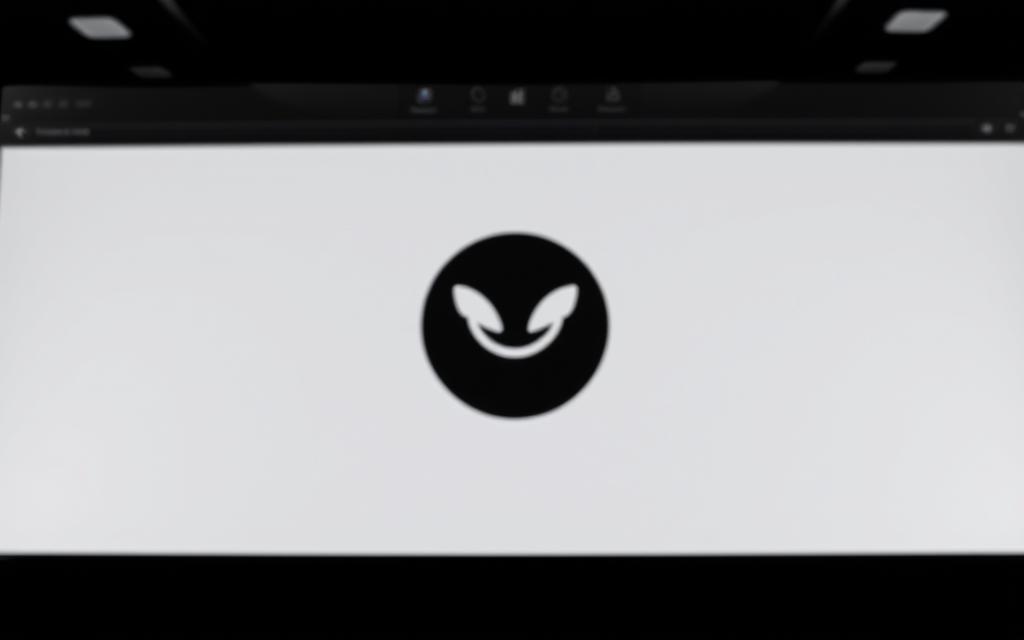
Custom Image Creation
Our custom image creation service delivers tailored visual content that aligns with specific client needs. We understand client requirements and translate them into effective AI prompts, generating multiple options and refining results until client satisfaction is achieved.
Brand-Specific Visual Identity Development
We develop cohesive visual identities for brands using AI technology, creating consistent visual elements that strengthen brand recognition across all platforms. Our expertise in generating brand-specific image libraries maintains stylistic consistency, ensuring AI-generated visuals integrate seamlessly with existing brand assets.
Training and Consultation
Our training and consultation services empower clients to leverage AI image generation, providing an educational approach to understanding AI prompt engineering and image refinement. We help businesses integrate AI image generation into their workflows, committing to ongoing support and knowledge transfer to maximize client success.
The Ethical Considerations of AI Art
The use of AI to generate images raises complex ethical issues that need to be addressed. As AI-generated images become more sophisticated, concerns about their impact on various aspects of society are growing.
Copyright and Ownership Questions
One of the primary ethical concerns surrounding AI-generated images is the issue of copyright and ownership. When an AI system creates an image, who owns the rights to that image? Is it the developer of the AI, the user who prompted the creation, or the AI itself? This question is currently being debated in legal circles.
Different platforms are handling rights and licensing for AI-generated images in various ways. For instance, some services provide the user with full rights to the generated image, while others retain certain rights for the AI or its developers.
| Platform | Rights to AI-Generated Images | Licensing Terms |
|---|---|---|
| Platform A | User retains full rights | Commercial use allowed |
| Platform B | Developer retains some rights | Personal use only |
| Platform C | Shared rights between user and developer | Commercial use with attribution |
Authenticity in the Age of Algorithms
The ability of AI algorithms to generate convincing imitations of human art challenges traditional notions of authenticity and originality. This raises questions about the value we place on human creativity versus AI-generated content.
To address these concerns, some companies are implementing measures such as watermarking AI-generated images and providing content credentials based on standards like C2PA. These efforts aim to increase transparency and help users identify AI-generated content.
For example, Bing Image Creator includes a watermark in the bottom left corner of generated images and offers content credentials to help users verify the origin of the images. This approach allows living artists, celebrities, and organizations to request limitations on the creation of images associated with their names and brands.
Getting Started with AI Generated Images
The world of AI-generated images is now more accessible than ever, thanks to advancements in image generator technology. Whether you’re a seasoned designer or a curious beginner, creating stunning visuals with AI is simpler than you think.
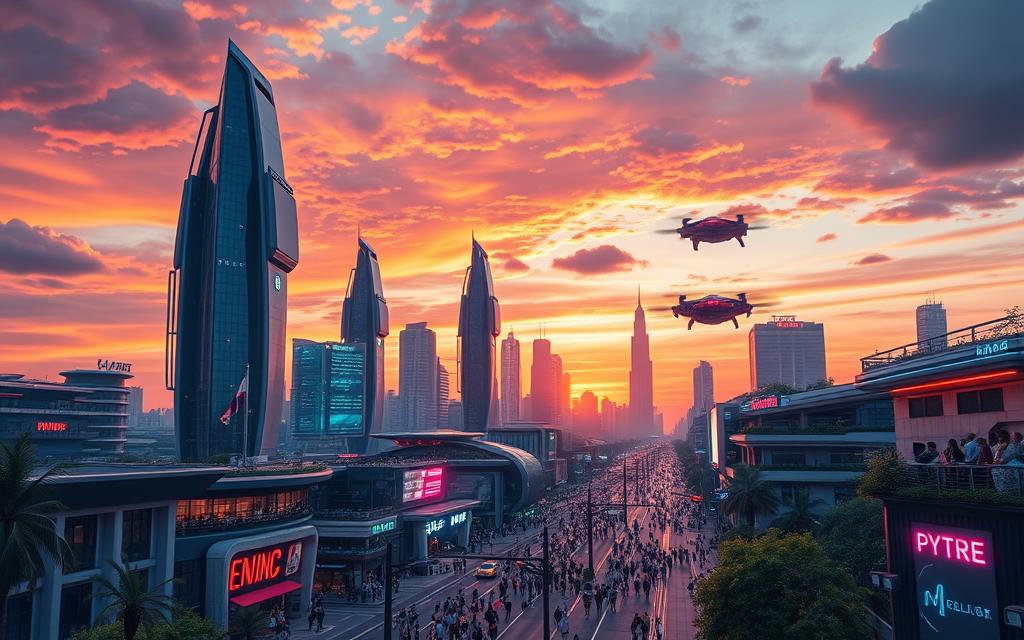
Choosing the Right AI Image Generator
With numerous AI image generator platforms available, selecting the right one can be overwhelming. Consider factors such as your specific needs, budget, and technical expertise when choosing an image generator. Look for platforms that offer flexibility in prompt creation and style options, as well as user-friendly interfaces.
Step-by-Step Guide to Creating Your First AI Image
To generate images using AI, start by describing what you want to see in detail. Use the text image feature to input your description and choose from available style options like Enhance, Anime, or Digital-Art. Adjust settings such as size, aspect ratio, and color preferences as needed. Then, click “Generate image” to create your first AI-generated image.
By following these steps and experimenting with different prompts and settings, you can unlock the full potential of AI-generated images and take your visual creations to the next level.
Conclusion: The Future of Visual Creation
The future of visual creation is being shaped by AI-generated images, transforming industries and redefining creativity. As we’ve explored, the technology behind AI-generated images has advanced significantly, enabling the production of high-quality images that are increasingly sophisticated.
The impact of this technology on various sectors, from marketing to product design, has been profound. AI-generated images are not only enhancing visual creation but also democratizing access to professional-quality visuals. This shift is expected to continue, with future advancements likely to further blur the line between human and AI-created art.
As we move forward, it’s crucial to recognize the potential of AI-generated images to revolutionize the way we create and interact with visual content. While embracing this creative technology, it’s also important to remain aware of the ethical considerations surrounding its use. By doing so, we can harness the full potential of AI-generated images, ensuring that this technology enhances rather than replaces human creativity.
At the intersection of art and algorithm, exciting possibilities await. We invite you to partner with our services to explore the full potential of AI-generated images and to be at the forefront of this future in visual creation. Together, let’s shape the image of tomorrow.
FAQ
What is the difference between AI art and traditional art?
AI art is created using algorithms and machine learning, whereas traditional art is created by human hands. While AI art can mimic certain styles, it lacks the emotional and personal touch that a human artist brings to a piece.
How do I choose the right AI image generator for my needs?
Consider the type of images you want to create, the level of customization you require, and the quality of the output. Research different options, such as Deep Dream Generator or Prisma, and read reviews to find the best fit.
Can I use AI-generated images for commercial purposes?
Yes, but be aware of the terms of service for the specific AI image generator you are using. Some may have restrictions on commercial use, while others may require attribution or have specific guidelines.
How do I craft effective prompts for AI image generation?
To get the best results, provide detailed descriptions of the image you want to create, including style, composition, and mood. Experiment with different prompts and refine your results to achieve the desired outcome.
What are the copyright implications of using AI-generated images?
The copyright status of AI-generated images is still a topic of debate. In general, the output is considered a derivative work, and ownership may be attributed to the creator of the AI algorithm or the user who generated the image.
Can AI image generators be used for product design and visualization?
Yes, AI image generators can be a valuable tool for product design and visualization. They can help create realistic and detailed images of products, allowing designers to explore different concepts and iterate on their designs.
How do AI-generated images impact the role of human artists and designers?
AI-generated images are not intended to replace human artists and designers, but rather to augment their capabilities. By automating certain tasks, AI can free up creatives to focus on higher-level tasks that require imagination and innovation.


